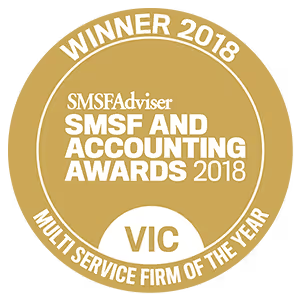Not sure how a scrip for scrip rollover impacts your business? In this article, we’ll walk you through the process, so you understand the benefits of this event, and how to ensure you’re eligible.
Liston Newton Advisory are your tax planning experts. Contact us today to book a free strategy session and learn how to make more tax-effective decisions for your business.
What is a scrip for a scrip rollover?
To some, scrip may seem like a made-up word. But in the right context, a scrip has a very real purpose. None more so than when it comes to selling your business.
A scrip for a scrip rollover typically occurs when your business is bought by another entity. In this circumstance, you receive new shares in the company that bought your existing company, rather than cash. These shares then take the place of cash you would have received from the sale of your business.
Effectively, it’s a like-for-like transfer of shares for cash, from one company to another.
The scrip for scrip rollover is a form of CGT relief. As you're receiving shares rather than cash, this enables you or your SMSF to disregard any capital gains made from the sale of your business.
How a scrip for scrip rollover works

When selling your business, and you accept shares in place of cash for the sale, you're eligible for the scrip for scrip rollover. These qualifying shares take on the cost base of the shares in your original business that they’ve replaced.
So effectively, for tax purposes, you’re still using the original share prices to determine the capital gain you've made.
As you're not receiving a cash amount, as such, this allows you to defer any capital gains, and you may also qualify to access the 50% CGT discount.
A script for scrip rollover is designed to allow business owners to disregard any capital gains on the takeover of the business, and enables the prior owner to retain some equity.
There are two different instances in which this occurs: scrip for scrip rollover for companies, and a scrip for scrip rollover for trusts.
For companies
There are strict rules for how scrip for scrip rollovers operate for companies:
- A company may qualify for a scrip for scrip rollover if your shareholders with a voting interest are able to continue holding their shares on the same terms.
- The company performing the takeover must not find itself in breach of provisions laid out in the Corporations Act 2001.
- The company being taken over must include a scheme of arrangement, also in line with approvals determined in the Act, and the court.
For trusts
For trusts, a scrip for scrip rollover operates in much the same way. All trust owners with a voting interest are able to take part in the takeover of your business. Similarly, the takeover must not contravene anything laid out in the Corporations Act 2001.
The key difference between the two is how the structures operate, and the level of power and involvement that the trust owners have in the company.
Who is eligible for a scrip for scrip rollover?
As a business owner, if you choose to sell your business for shares in the acquiring business, or a combination of cash and shares, you may be eligible for a scrip for scrip rollover.
You must be an Australian resident for tax purposes. Unless that is, the company that’s taking over the existing company is an Australian entity, in which you then qualify.
Who is ineligible for a scrip for scrip rollover
However, there are times that you may not be eligible for a scrip for scrip rollover:
- Your business was started or purchased prior to 20 September 1985, when CGT came into effect.
- If you accept cash for any portion of the sale of your business, then this portion doesn't qualify for a scrip for scrip rollover. You’re effectively voiding the key tenet of the relief — if you exchange one scrip for another, it’s not a like-for-like exchange.
- If any capital gain made from the replacement is already likely to be disregarded.
- If the business performing the take-over is a non-Australian entity.
- If another type of rollover applies, such as a company rollover.
Using a scrip for scrip rollover to defer capital gains tax
Scrip for scrip rollover provides a tax-effective way to defer, and subsequently manage, any CGT.
It allows you to defer any capital gain made in the sale of your business until the time you decide to sell the shares. Then, your new shares are judged on the cost base of the original business shares, and include the period of ownership of the original shares.
When selling, based on this timeframe, you can then apply the 50% CGT discount at the time you sell the shares.
The benefits of scrip for scrip rollover
There are a number of strong benefits of scrip for scrip rollover, and they all involve CGT concession.
As the business owner:
- You get to disregard any capital gains that result from the sale of your business.
- The shares in the new business include the period of ownership for which you owned your old business, which contributes towards the 12 months required to receive the 50% CGT discount.
- You can defer the capital gain until the time you sell the shares, and it’s still calculated using the cost base of the share price from your original business.
The final word
Scrip for scrip rollover can sound like a complicated beast when you don’t know what it is. But it’s actually quite easy to understand.
If your choose to sell your business, a scrip for scrip rollover means you accept shares in the new business rather than cash.
Besides that, you don’t have to do anything—and it also provides the opportunity to make this exchange as tax-effective as possible.






